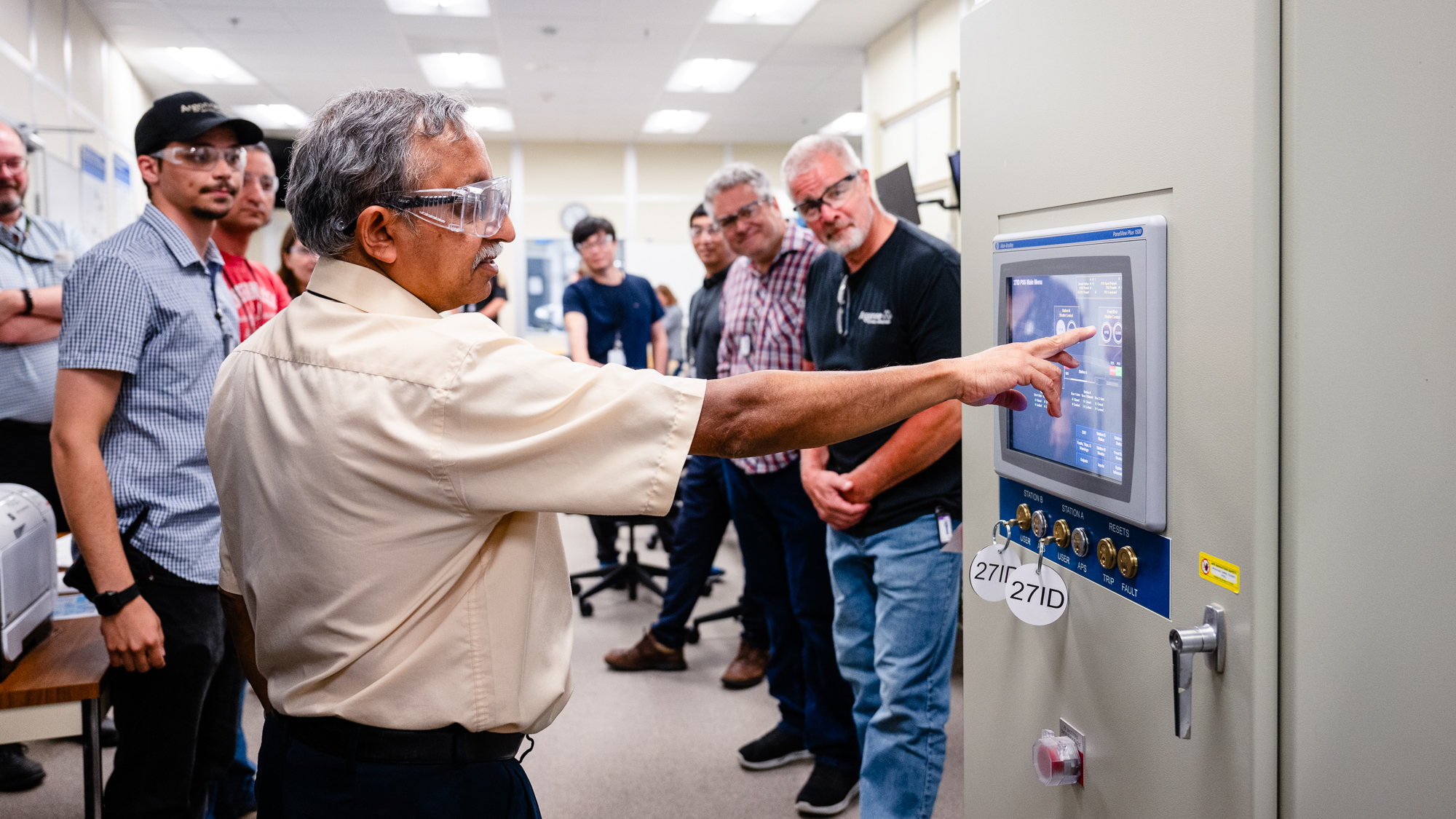A new era of science at the Advanced Photon Source (APS) is ready to begin. On June 17, 2024, the facility at the U.S. Department of Energy’s (DOE) Argonne National Laboratory delivered its first X-ray light beams to a scientific beamline as part of a comprehensive and complex upgrade.
The APS, a DOE Office of Science user facility, has been a leading destination for X-ray science for nearly 30 years. Scientists from around the world use its ultrabright X-ray beams to learn more about our universe and lay the groundwork for longer-lasting batteries, more efficient solar cells and tougher materials for roads and bridges, to name a few. For the past year, operations have been paused at the facility while the original storage ring, which generates the X-ray beams, was removed and a brand-new ring installed.
“With more powerful X-ray beams and greatly enhanced beamlines, we’ll strengthen U.S. leadership in photon sciences.” — Paul Kearns, Argonne laboratory director
After more than a month of commissioning the new storage ring, the APS team has begun the process of bringing each of the 71 experiment stations, called beamlines, around the ring into operation. The first scientific beamline to receive X-rays was 27-ID, home of the resonant inelastic X-ray scattering program at the APS. Scientists will be able to use 27-ID to study complex materials that may be used to power the devices of the future.
“Just like the original APS revolutionized hard synchrotron X-ray science in the United States and the world, the upgraded APS promises to do the same for the next several decades,” said Laurent Chapon, associate laboratory director for photon sciences at Argonne and director of the APS. “It has taken our remarkable team more than a decade of work to get to this moment, and we look forward to the extraordinary scientific discoveries that will be made at this renewed facility.”
The new storage ring will also pioneer the use of multi-bunch swap-out injection, a method of periodically replenishing electrons in the beam as it circulates. The APS is the first modern synchrotron X-ray light source in the world to make use of it. Argonne’s accelerator team successfully rolled out the technique on the new machine recently.
The X-ray beams generated by the upgraded APS will be up to 500 times brighter than those of the original facility, and hundreds of billions of times brighter than the X-ray beams in your dentist’s office. Using these beams, scientists will be able to peer inside thick materials to see what they are made of and how they behave, at spatial and time-scale resolutions previously impossible with X-rays.
“The upgraded APS storage ring is performing exactly as we had hoped it would,” said Jim Kerby, director of the APS Upgrade Project. “What we’re seeing now is the result of hundreds of people doing excellent and safe work consistently for years. I simply cannot say enough about the Upgrade team who designed, built and installed this new machine with incredible precision in all aspects. It is an amazing achievement, and the relatively quick commissioning of the new machine is a testament to the skills everyone brought to the table. Achieving first light with this new machine is a proud moment for everyone here at Argonne.”
Over the course of the next year, all of the APS beamlines will return to operations, and scientists from around the globe will begin to conduct research on the upgraded APS later in 2024.
“I’m excited to see what the international science community will do with the increased capabilities of the upgraded APS,” said Paul Kearns, Argonne laboratory director. “With more powerful X-ray beams and greatly enhanced beamlines, we’ll strengthen U.S. leadership in photon sciences. And by combining its cutting-edge technology with our new Aurora supercomputer, we’ll enable scientists to make pivotal discoveries at unprecedented speeds.”
About the Advanced Photon Source
The U. S. Department of Energy Office of Science’s Advanced Photon Source (APS) at Argonne National Laboratory is one of the world’s most productive X-ray light source facilities. The APS provides high-brightness X-ray beams to a diverse community of researchers in materials science, chemistry, condensed matter physics, the life and environmental sciences, and applied research. These X-rays are ideally suited for explorations of materials and biological structures; elemental distribution; chemical, magnetic, electronic states; and a wide range of technologically important engineering systems from batteries to fuel injector sprays, all of which are the foundations of our nation’s economic, technological, and physical well-being. Each year, more than 5,000 researchers use the APS to produce over 2,000 publications detailing impactful discoveries, and solve more vital biological protein structures than users of any other X-ray light source research facility. APS scientists and engineers innovate technology that is at the heart of advancing accelerator and light-source operations. This includes the insertion devices that produce extreme-brightness X-rays prized by researchers, lenses that focus the X-rays down to a few nanometers, instrumentation that maximizes the way the X-rays interact with samples being studied, and software that gathers and manages the massive quantity of data resulting from discovery research at the APS.
This research used resources of the Advanced Photon Source, a U.S. DOE Office of Science User Facility operated for the DOE Office of Science by Argonne National Laboratory under Contract No. DE-AC02-06CH11357.
Argonne National Laboratory seeks solutions to pressing national problems in science and technology by conducting leading-edge basic and applied research in virtually every scientific discipline. Argonne is managed by UChicago Argonne, LLC for the U.S. Department of Energy’s Office of Science.
The U.S. Department of Energy’s Office of Science is the single largest supporter of basic research in the physical sciences in the United States and is working to address some of the most pressing challenges of our time. For more information, visit https://energy.gov/science.



